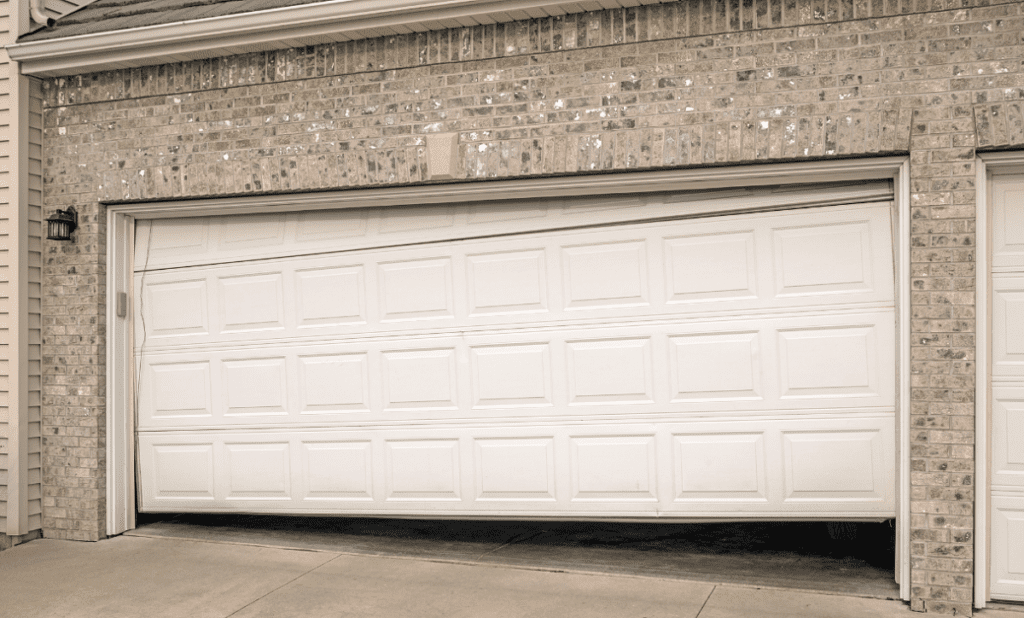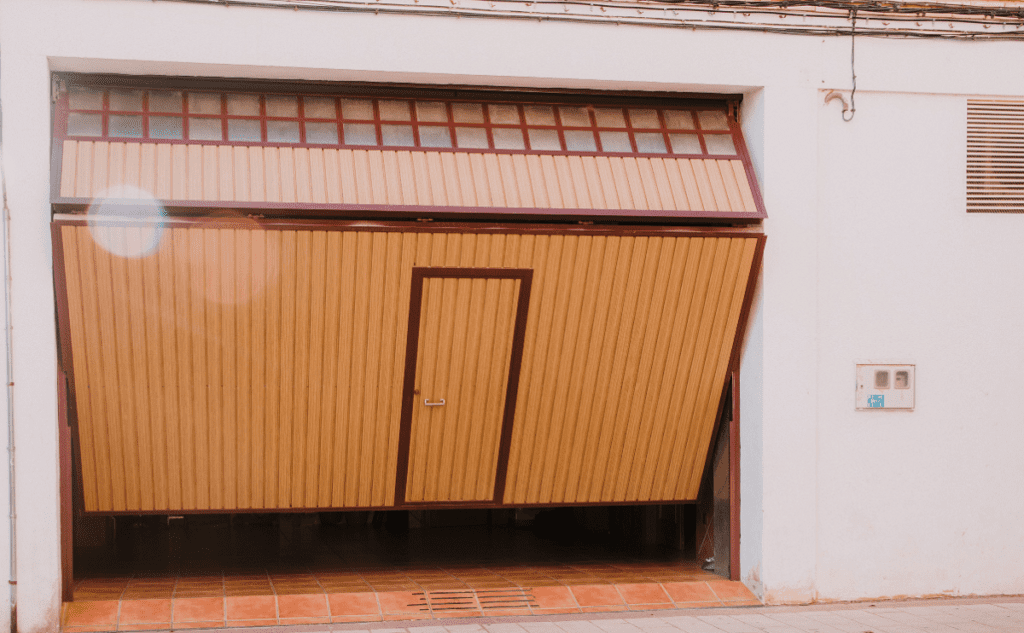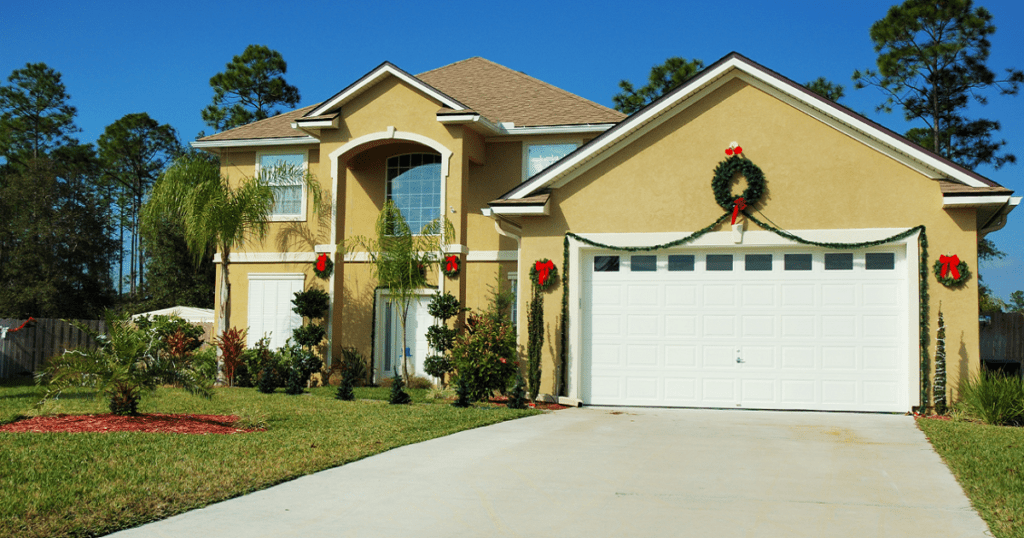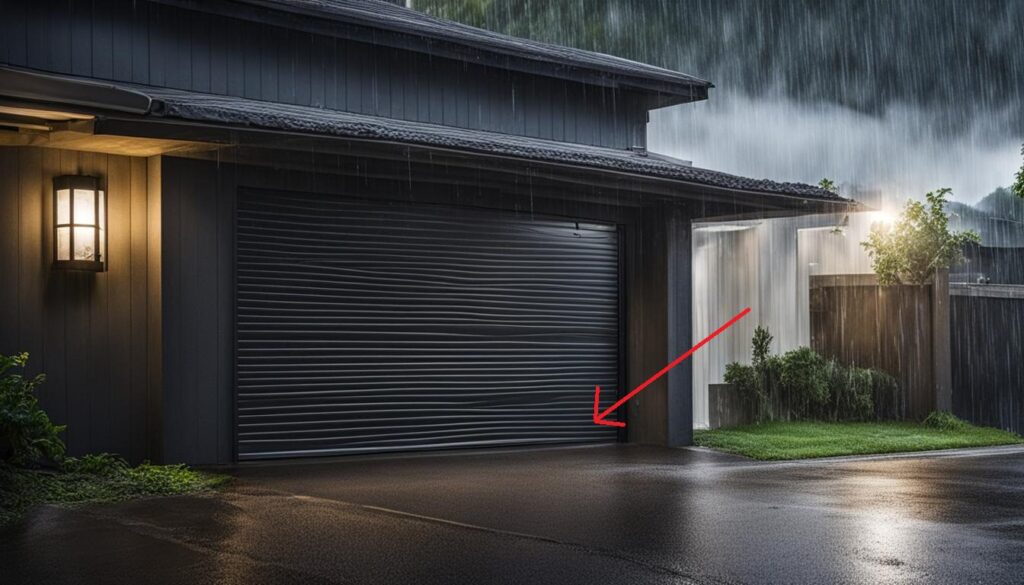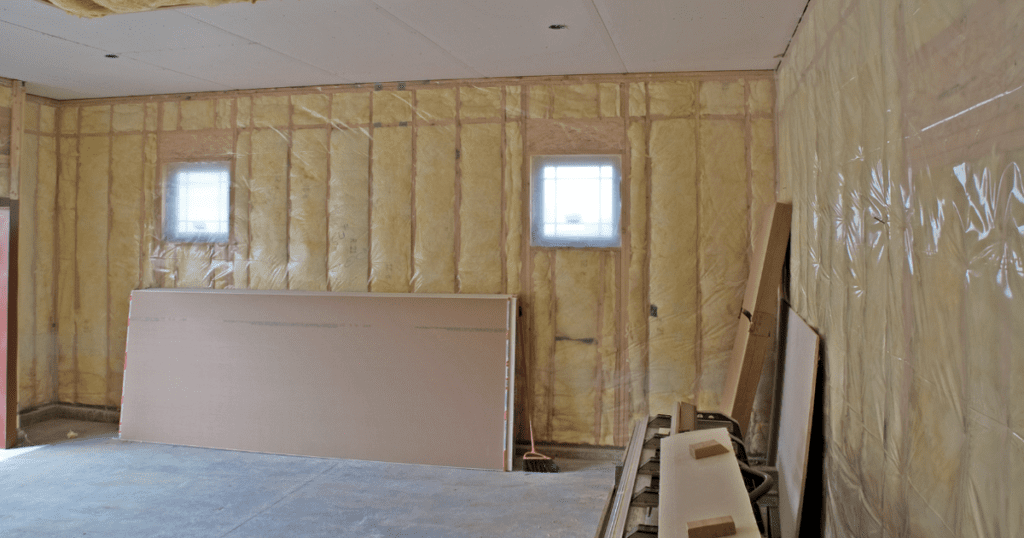
The Importance of Insulating a Garage Door
Many homeowners don’t realize that their garage door is the largest opening in their home and often the least insulated. This lack of insulation can lead to a host of problems, including temperature fluctuations, energy loss, and increased noise levels.
That’s why it’s crucial to insulate your garage door. But how to insulate a garage door? Properly insulating your garage door can help regulate the temperature inside your home, making it more comfortable year-round and reducing your energy bills.
It can also reduce noise from outside sources, such as neighboring traffic or barking dogs. But most importantly, it can help protect any items stored in your garage from extreme temperatures and damage.
Preview of Steps Involved in How to Insulate a Garage Door
Insulating a garage door may seem like a daunting task for those unfamiliar with DIY projects. However, with some basic knowledge and proper tools, anyone can tackle this project easily.
Here is an overview of what you will need to do:
- Assessing Your Garage Door: Determine if you have an insulated or non-insulated garage door and what type of insulation it requires.
- Gathering Materials: Gather all necessary materials needed for insulating a garage door.
- Preparing Your Garage Door: Proper preparation is essential before starting this project.
- Installing Insulation Panels: Learn how to properly install insulation panels on your garage door.
- Sealing Gaps and Cracks: Properly seal any gaps or cracks where air could escape.
- Adding Weather Stripping: Add weather stripping around the edges of the garage door to improve insulation effectiveness.
Now that you have an idea of what’s involved, let’s dive deeper into each step so you’ll know exactly how to insulate your garage door effectively!
Assessing your Garage Door
Understanding Your Garage Door Type and Insulation Needs
When it comes to insulating your garage door, the first step is to understand what type of garage door you have. There are different types of garage doors, including sectional, roller, and single-panel doors.
Each of these types requires a different approach to achieve optimal insulation. Sectional garage doors are the most common type and usually consist of panels connected by hinges.
They tend to be easier to insulate than other types since you can add insulation directly to the panels. Roller garage doors have metal slats that roll up around a drum above the door opening and can be more challenging to insulate due to their design.
Single-panel garage doors consist of one large panel that opens up as a single piece rather than individual sections that move independently like sectional doors do. This type is less common nowadays but may still be found in older homes.
Determining if Your Garage Door Needs Insulation
The need for insulation will depend on several factors, such as your climate and how you use your garage space. If you live in an area with extreme temperatures or if you use your garage for more than just parking cars, such as a workspace or storage area, then insulation is highly recommended.
You can also determine if your door needs insulation by touching it during extreme weather conditions; if it feels cold or hot to the touch, then it’s probably not insulated properly- which makes getting in and out uncomfortable! Additionally, an uninsulated door tends to create temperature fluctuations inside the home due to heat transfer from outside cold spaces.
Another sign that your door needs insulation is if energy bills skyrocket during extreme weather conditions when compared with previous months or years- this means your heating/cooling system has been working overtime because of poor insulation in the entryway. Overall, understanding what kind of garage door you have and assessing its insulation needs is essential before embarking on the task of insulating it.
Gathering Materials
Materials Needed for Insulating a Garage Door
Before you begin your garage door insulation project, it is important to make sure you have all of the necessary materials. Some essential tools and materials for garage door insulation include insulation panels, adhesives, weather stripping, aluminum tape, and a utility knife.
You may also want to have a caulking gun and silicone sealant on hand to fill in any gaps or cracks in the garage door. When selecting insulation panels, keep in mind that there are different options available on the market.
Some popular choices include polystyrene foam board insulation and reflective foil bubble insulation. While both types of insulation offer similar benefits for insulating your garage door, reflective foil bubble insulation tends to be more affordable.
Creative Tips on Where to Find Materials at an Affordable Price
Insulating your garage door doesn’t have to break the bank. There are plenty of ways to find high-quality materials at an affordable price.
Start by checking out local home improvements stores like Lowe’s or Home Depot; they often carry a wide selection of garage door insulation kits at reasonable prices. Another option is to look online for deals on bulk orders of insulation panels or weather stripping.
Websites like Amazon or eBay can be great resources for finding high-quality products at discounted prices. If you’re really looking to save money while insulating your garage door, consider repurposing old materials from around your home.
For example, you could use old blankets or comforters as makeshift insulation panels if you don’t want to spend money on new ones. Additionally, many hardware stores offer discounts if you buy damaged or slightly imperfect products – so don’t be afraid to ask!
Remember that investing in proper garage door insulation will ultimately save you money by reducing energy costs and protecting your belongings from extreme temperatures. So don’t skimp on quality materials – your garage (and your wallet) will thank you in the long run.
Preparing Your Garage Door
Necessary Steps to Prepare Your Garage Door for Insulation
Before starting your garage door insulation project, it is important to properly prepare the surface. This includes cleaning and measuring the garage door. Cleaning the surface helps in removing debris, dirt, and other contaminants that might prevent proper insulation adhesion.
The measurement process is crucial because you want to get an accurate measurement of the garage door area that needs insulation. Cleaning a garage door can be a daunting task for some people, but let me tell you this – it’s an essential step in maximizing energy efficiency with garage door insulation.
You don’t want to trap dirt or moisture when insulating because this can lead to mold or mildew growth on your walls. So, grab some soap and water, a bristle brush or sponge, and start scrubbing away.
How to Clean and Measure Your Garage Door
Once you have all cleaning materials ready, start by wiping down the entire surface of the garage door with soap and water using a bristle brush or sponge. Be sure to remove any dirt buildup on crevices and corners, as they can affect adhesion.
After cleaning, dry off any moisture with a clean towel or let it air-dry completely before proceeding with measurements. When measuring your garage door area that needs insulation, use a tape measure for accuracy.
Some people may think that skipping this step can save time but believe me when I say proper preparation is key in achieving optimal results for insulating your garage doors. Don’t forget – these are essential tools and materials for effective garage door insulation solutions – so take them seriously if you want to reap all of their benefits!
Installing Insulation Panels
User-Friendly Instructions for DIY Garage Door Insulation
When it comes to insulating your garage door, one of the most important steps is installing insulation panels. But how do you do it?
Don’t worry; it’s not rocket science. Here are some user-friendly instructions for DIY garage door insulation.
- Start by measuring your garage door panels.
- Then, use a utility knife to cut the insulation panels to size so that they fit snugly into the cavities between each panel.
- Next, insert the panels into their respective cavities and secure them in place with double-sided tape or adhesive. Be sure to follow any manufacturer instructions for specific adhesive requirements.
- Use a straight edge and utility knife to trim any excess insulation from around the edges of each panel. This will give your garage door a clean, finished look.
Tips on How to Cut and Fit Panels Properly
Cutting and fitting insulation panels properly can be challenging if you don’t have the right tools or know-how. But with these creative tips, you can make the process much easier!
First, invest in a good-quality utility knife or box cutter with sharp blades. This will make cutting through tough insulation materials much easier and more precise.
Secondly, if you’re having trouble getting your insulation panels to fit snugly into their respective cavities between garage door panels, try using foam weather stripping as spacers. Simply cut small strips of foam weather stripping and place them around the edges of each cavity before inserting your insulation panel.
This will help fill in any gaps and ensure a tight fit. If you’re having trouble getting your panels to stay in place while you’re securing them with double-sided tape or adhesive, try using small screws or nails instead.
Just be sure to choose screws or nails that won’t rust over time and cause damage to your garage door panels. With these tips, you’ll be able to cut and fit your insulation panels like a pro and enjoy the benefits of a more energy-efficient garage door!
Sealing Gaps and Cracks: The Golden Ticket to Insulation Effectiveness
Garage door insulation is all about keeping the outside temperature out and the inside temperature in. To achieve maximum energy efficiency with garage door insulation, it’s critical to seal every gap and crack that could potentially allow air to leak in or out.
This includes gaps around the edges of the garage door, cracks in the garage door panels, and any other areas where air might penetrate. Sealing these gaps and cracks is a crucial step toward achieving optimal insulation effectiveness.
When it comes to sealing gaps and cracks in your garage door, there are a few effective techniques you can use. One option is to use caulk to seal any small gaps or cracks on the garage door itself or around its edges.
Caulk is relatively inexpensive, simple to apply, and can provide an airtight seal that will keep unwanted air from entering your garage. Another option for sealing gaps and cracks is weather stripping.
Weatherstripping usually comes in rolls of flexible material that can be cut into different lengths depending on where it’s needed. It’s designed to fit tightly against the surface it’s applied to, providing an excellent barrier against air penetration.
Crack Down On Ineffective Insulation With These Creative Tips
It’s not just about finding gaps or cracks in your garage door; you also want to make sure you’re addressing them effectively. For example, foam tape can be used as an alternative solution for sealing smaller gaps between panels rather than caulk which may harden over time, causing issues later down the line.
If there are larger areas that need attention, such as spaces at joints between sections of your garage door panels, using a rigid insulation material like polystyrene foam board may work best since it will fill those larger spaces more effectively than caulking. Another creative solution involves using duct tape for temporary fixes while you wait for your insulation panels to arrive.
This is particularly helpful if you live in an area where temperatures fluctuate frequently and you need a quick fix until the more permanent insulation solutions are in place. When it comes to sealing gaps and cracks on your garage door, always remember that every detail counts towards achieving maximum energy efficiency.
Take the time to thoroughly inspect your garage door for gaps or cracks before beginning any insulation work. Address every gap or crack with the appropriate sealing solution, and be sure to use high-quality materials to ensure long-lasting effectiveness.
Seal the Deal on Your Garage Door Insulation
When it comes to insulating your garage door, sealing gaps and cracks is an essential step toward achieving optimal energy efficiency. Whether you choose caulk, weather stripping, foam tape, polystyrene foam board, or duct tape as a solution for sealing gaps and cracks on your garage door, make sure it’s done correctly. By doing so, not only will your garage feel more comfortable during extreme temperatures, but it will also decrease the amount of energy consumption needed which will translate into cost savings over time.
Don’t forget that professional help is always available if needed from companies who specialize in garage door insulation services. So grab those essential tools and materials for garage door insulation today and start making a difference!
Adding Weather Stripping
How Proper Weather Stripping Can Further Improve Insulation Effectiveness
If you’re serious about insulating your garage door and maximizing energy efficiency, adding weather stripping is a must. For those unfamiliar with the term, weather stripping refers to a material used to seal gaps between two surfaces (in this case, your garage door and its frame) in order to prevent air leaks.
Even if you’ve installed insulation panels or other garage door insulation methods, these measures may not be enough to fully seal your garage from the outside elements. With weather-resistant insulation for garage doors, such as vinyl or rubber strips, you can achieve a tighter seal around the edges of your garage door.
This not only helps keep out drafts and lower energy costs, but it also minimizes outdoor noise pollution and prevents dirt and debris from entering your home. Additionally, when properly installed with the right insulation kits for garage doors, weather stripping can last for years without needing replacement.
The Different Types of Weather Stripping Available in the Market
When it comes to weatherproofing garage doors with insulation techniques, there are several types of weather stripping available in the market today. The most common materials include vinyl (PVC), rubber (EPDM), and foam (polyurethane). Each material has its own advantages and disadvantages depending on factors such as climate conditions, frequency of use of the door, overall quality level desired by homeowner/contractor, etc.
- Vinyl strips are often preferred because they reinforce an airtight bond that’s resistant to abrasions and temperature fluctuations.
- Rubber strips provide similar benefits while being more pliable than vinyl which makes them easier to install on uneven surfaces or on older-style sectional doors that may have unusual curvature along their surface areas.
- Foam is generally more affordable than other options but may wear out faster in harsher climates where temperatures fluctuate significantly between seasons.
Ultimately, the best type of weather stripping for your garage door insulation installation will depend on your individual needs and preferences. Consider speaking with a professional or doing research online to determine which material will work best for your situation. In any case, adding weather stripping to insulate a garage door is an essential step in the process of making your home more comfortable, energy-efficient, and overall enjoyable to live in.
Frequently Asked Questions
What is the easiest way to insulate a garage door?
The easiest way to insulate a garage door is to use insulation panels or kits designed specifically for garage doors. These panels can be easily installed on the inside of the door without the need for extensive modifications or professional assistance.
Is it a good idea to insulate a garage door?
Insulating a garage door is generally a good idea as it helps regulate temperature, improve energy efficiency, and reduce heat transfer. Insulation can make the garage more comfortable, protect stored items, and potentially save on heating or cooling costs.
How do you properly insulate a garage?
To properly insulate a garage, start by sealing any gaps or cracks in the door and around the edges. Then, consider adding insulation to the walls, ceiling, and garage door. This can be done using insulation materials such as foam boards, fiberglass batts, or reflective insulation.
What is the best insulation for a cold garage door?
The best insulation for a cold garage door depends on factors such as the climate, desired level of insulation, and personal preferences. However, insulation materials with a high R-value, such as polyurethane foam or reflective insulation with multiple layers, are commonly used to provide effective insulation for cold garage doors.
What materials are commonly used to insulate garage doors?
Commonly used materials to insulate garage doors include foam boards, fiberglass batts, reflective insulation, and spray foam insulation. These materials offer different levels of insulation and can be chosen based on factors such as budget, desired R-value, and ease of installation.
What is the cheapest way to insulate a garage?
The cheapest way to insulate a garage typically involves using weatherstripping and sealant materials to seal any gaps or cracks in the door and around the edges. While this method may not provide the same level of insulation as insulation panels or kits, it can still help improve energy efficiency and reduce drafts at a lower cost.
Conclusion
The Benefits of Insulating Your Garage Door
Insulating your garage door is a smart investment that can yield many benefits. By properly insulating your garage door, you can enhance the comfort of your home by maintaining a consistent temperature throughout the year.
You will also significantly reduce energy costs and increase energy efficiency, which is especially important in regions with extreme temperatures. The benefits of an insulated garage door are not limited to personal comfort and savings; it also increases the resale value of the home.
Take Action Now to Insulate Your Garage Door
If you have decided to insulate your garage door, there are user-friendly instructions available online for DIY garage door insulation. You can also consult with a professional contractor or hardware store for guidance on maximizing energy efficiency with garage door insulation and addressing common challenges.
There are several options available when it comes to insulation materials, such as fiberglass batts, foam board insulation, and reflective barrier kits. The cost of insulating a garage door may vary depending on material type, size and region.
However, tips for insulating garage doors on a budget include shopping around for deals online or at local hardware stores. It’s essential to ensure that your insulation meets regulations and requirements for garage doors as per specific regions’ codes before purchasing any materials or tools.
Transform Your Home Today!
With proper insulation, you will enjoy the benefits of an enhanced level of comfort while reducing energy costs at the same time! Take action now by following the easy-to-follow steps outlined in this article or consulting with professionals who offer installation services in your area. Transforming your home has never been easier!


